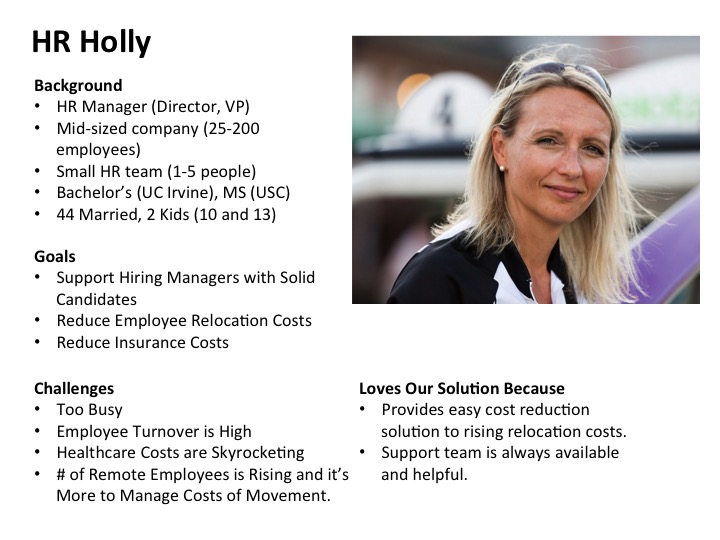This post is first in a 2-part series.
Many of us are already aware that market segmentation is an essential building block of any marketing strategy. Traditionally, this involves defining a segment of the marketplace, organized by demographic, geographic, behavioral, and psychographic variables.
While this is still an important piece of any marketing strategy, taking a deeper dive and creating buyer personas is an effective extra step in helping your company clearly understand who to attract and eventually close as customers. Knowing a company’s buyer personas is essential to driving the content, social, business, and sales strategy, allowing you to ultimately achieve your business goals.
What is a Buyer Persona?
A buyer persona is an fictional representation of your ideal customer. If you were to picture one person, who best represents a specific target segment of your company’s ideal customer base, that would be the buyer persona.
A buyer persona is a specific example of someone you do want to attract as a customer.
What is a Negative Buyer Persona?
A buyer persona could be the ideal customer you want to attract or the customer you don’t want to attract. The latter is known as a “negative buyer persona”. Think “good fit” vs. “bad fit” customers or clients.
Examples of negative buyer personas include students just looking for information, competitors, customers who typically don’t have the budget for your services, etc.
In a nutshell, a negative buyer persona is someone you don’t want to attract as a customer, and it equally important to consider negative personas in your strategy as primary buyer personas.
Why are buyer personas important?
Buyer personas represent an essential part of your business strategy because they help everyone in the organization have the same vision of who your ideal customer really is and what makes that person “tick”.
Having the same image of who we want to attract and avoid in our business brings clarity to many aspects of our company strategy – marketing, sales, service, etc.
A buyer persona is easier to picture than a broad segment of individuals. For example, there is a better chance that everyone in a company can identify with “HR Holly”, who faces specific challenges and has certain goals than it is to imagine HR managers between the ages of 35-45 for mid-market companies.
Whether creating content, posting on social media, or developing and documenting a sales process, buyer personas can effectively unify and drive these efforts across an organization.
What are the essential components of a buyer persona?
While there are many variations, you will usually find the following essential components in a developed buyer persona. Let’s use HR Holly as an example.

Who?
The who section generally includes background, demographics, and other identifier variables. What is this Holly’s role in a company? What does her family situation look like? What is her age, income, and location? What are her communication preferences?
What?
The what section includes Holly’s goals, challenges, and our solutions for her. What keeps Holly up at night, and how can our products or solutions address these concerns and needs?
Why?
Now, we can dig a little deeper into the whats to define the whys. Why are these goals important to Holly? What are her objections to your product or service? Why wouldn’t she buy from your company?
How?
What is your messaging that will appeal to Holly? What is your elevator pitch? How will you describe your solution to her? This if often known as your value proposition, and it might be what a sales rep says to a customer in a prospecting call.
Not Just for Ideal Customers
The How also might be how company leaders speak about your company services to prospective investors or others in your network. For example an HR software company targeting HR Holly might use the following messaging, “We help HR teams relocate employees faster, cheaper, and easier.” This can be adapted for marketing, sales reps, customer service teams, and others alike throughout an organization.
Next Steps
Now that you have an idea about what buyer personas are and why they are important, in part two I will explain the steps involved in building your own buyer personas.
About the author:
Erin Carpenter is the co-founder and CEO of Hidden Peak Interactive. Hidden Peak Interactive is focused on marketing and sales alignment, as well as helping companies accelerate sales with strategies that embrace modern buyer behavior and technology. Connect with Erin on Twitter @ehcarpenter.





